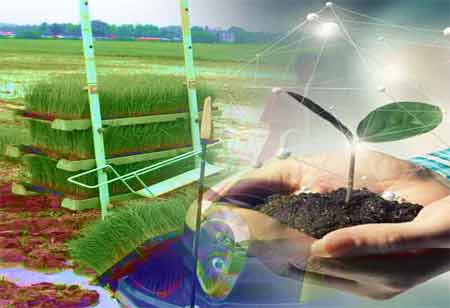Thank you for Subscribing to Agri Business Review Weekly Brief
Floating Agriculture and Its Impact on Bangladesh
Floating agriculture, also referred to as hydroponics, consists of beds of rotting vegetation that behave as a compost for growing crops.

By
Agri Business Review | Tuesday, May 16, 2023
Stay ahead of the industry with exclusive feature stories on the top companies, expert insights and the latest news delivered straight to your inbox. Subscribe today.
Floating agriculture, also referred to as hydroponics, consists of beds of rotting vegetation that behave as compost for growing crops. One country that is proactively employing this agricultural practice in APAC is Bangladesh.
FREMONT, CA: Floating agriculture, also referred to as hydroponics, consists of beds of rotting vegetation that behave as a compost for growing crops. These beds float on the surface of water, constructing land for agriculture in waterlogged regions, or regions with prolonged flooding. This traditional type of hydroponics, which dates back at least 400 years, is identified as a climate-resilient, nature-based solution.
Through this method, the cultivation of areas is allowed to continue, despite flooding, and it enables communities to become self-reliant. The area present below floating cultivation is around 10 times more productive than traditionally farmed land. The cultivation process of the practice uses water hyacinth, which is an invasive weed with a quick growth rate. After harvesting the crops, the floating rafts are used as organic fertilisers in the fields.
Local communities can benefit heavily from floating agriculture, as it alleviates poverty and increases food security. Furthermore, this approach is an environmentally friendly option to increase land availability for agriculture.
One country that is proactively employing this agricultural practice in Bangladesh.
The Impact of Floating Agriculture in Bangladesh
As Bangladesh is low-lying, it stands to be one of the most vulnerable countries to climate change. However, about half of the country’s workforce is employed in agriculture, pushing it to explore different agricultural approaches.
In the city of Barisal are rectangular floating rafts. They are primarily composed of tightly-knit water hyacinths and are supported with bamboo poles. They are layered with manure, upon which farmers plant various vegetables, spices, and fruits.
These farms have a low cost of establishment, enabling easy access to Bangladesh’s rural population. In addition, waters around the farm are utilised to farm fish or shelter livestock during heavy monsoon season. According to local farmers, the farms can be rebuilt swiftly after a cyclone.
In 2015, FAO designated 2,500 hectares of floating gardens in Bangladesh and the government of the country has since attempted to increase the implementation of floating agriculture. Today, 25,000 farmers in 24 districts are trained and have received seeds, pesticides, and logistical support to better implement this approach. In addition, Bangladesh Agricultural Research Institute conducted research in an effort to increase the efficiency of the cultivation. The country’s Department of Women's Affairs is also involved in this practice, aiding marginalised women to raise rice seedlings and cultivate vegetables. As a result, the target to raise the production of spices and vegetables by 10 per cent has already been achieved.
The solution stands to be a sustainable income for rural households in areas of the country where flooding is common. Similar forms of soil-free cultivation exist across Asia, including Inle Lake in Myanmar and Dal Lake in Kashmir.





